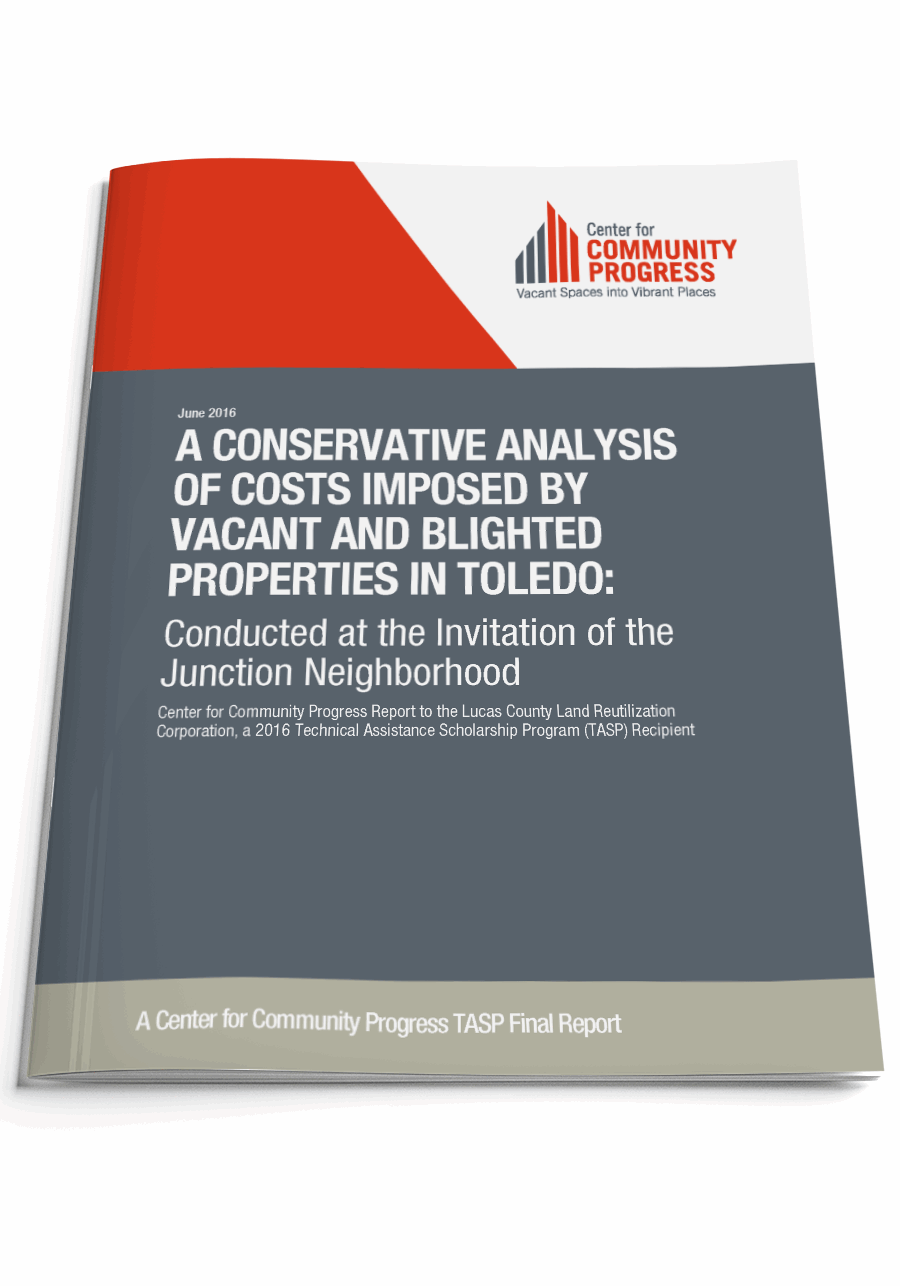A Conservative Analysis of Costs Imposed by Vacant and Blighted Properties in Toledo
Conducted at the Invitation of the Junction Neighborhood
Topic(s): Code Enforcement System, Local Analysis, Parcel Data & Neighborhood Markets, Property Tax System
Published: June 2016
Geography: Ohio
Author(s): Center for Community Progress
The Junction neighborhood in Toledo, Ohio, is home to many small businesses like Mrs. Gilmore’s Salon and Boutique and Mr. Liddell’s Barbershop—open every day but Sunday and Monday for the last thirty years. Many of Junction’s children attend Pickett Academy—surrounded by an educational rain garden, a bioswale project reflecting state-of-the-art urban environmentalism, and a number of historic churches.
In addition to its diverse business and community programs, its thriving and passionate residents, and its legacy of African-American leadership and institutions in the heart of the Rust Belt, Junction, like many neighborhoods throughout the country, reflects the marks of systemic disinvestment. Urban renewal and other similar federal, state, and local programs in the latter half of the twentieth century separated Junction from its neighbors through strategically placed highways that decimated the once thriving African-American business district and the homesteads of many Junction families. This historic disinvestment—coupled with the more recent impacts of the Great Recession of the twenty-first century, the foreclosure crisis, and the loss of major Toledo-based industry and its jobs—left a wake of physical vacancy and abandonment that Junction leaders are determined to address. Vacant lots and vacant, substandard properties are widespread throughout the Junction community and constitute a heavy weight on the backs of Junction residents seeking to (re)build a vibrant, thriving neighborhood. Out of the approximately 4,700 total parcels in the Junction neighborhood, 1,700 are vacant lots and over 400 are vacant structures—a combined total neighborhood vacancy rate of 45%.
In the face of this staggering vacancy rate, Junction leaders in partnership with the Lucas County Land Reutilization Corporation see profound possibilities and hope for their community and for the entire City of Toledo.
This report shares the findings from our technical assistance engagement with the Lucas County Land Reutilization Corporation (through our technical assistance scholarship program) about the Junction neighborhood, and the costs that vacant and blighted properties impose on Toledo.
See the companion Open Space Action Plan for the neighborhood.

Topic(s): Code Enforcement System, Local Analysis, Parcel Data & Neighborhood Markets, Property Tax System
Published: June 2016
Geography: Ohio
Related Publications
Other Related Content
Subscribe to join 14,000 community development leaders getting the latest resources from top experts on vacant property revitalization.
